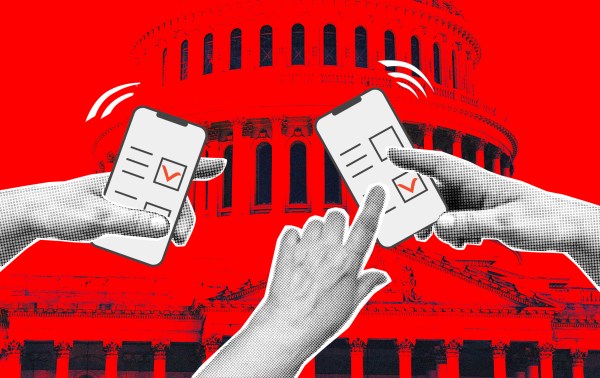Ohio Sen. J.D. Vance and Minnesota Gov. Tim Walz met Tuesday night in New York City for the only vice presidential debate of the 2024 election cycle. Moderated by CBS News’ Norah O’Donnell and Margaret Brennan, the two-hour discussion was remarkably cordial, and the candidates analyzed policy differences more closely than did the participants in the two presidential debates.
Here’s an overview of some of the most notable truths, lies, spins, and fibs from the night.
Foreign Policy
Walz on what Donald Trump’s secretaries of defense and national security advisers said about him.
Walz: “His chief of staff, John Kelly, said that he was the most flawed [human] being he’d ever met. And both of his secretaries of defense and his national security advisers said he should be nowhere near the White House.”
The claim is mostly true.
In 2020, CNN reported that, according to several of his colleagues, John Kelly—Trump’s longest-serving chief of staff—said on several occasions that the president was “the most flawed person [he had] ever met in [his] life.” Kelly has not shied from openly criticizing Trump elsewhere, but he has not confirmed the accuracy of the quote.
Both of Trump’s permanent secretary of defense appointees also have been critical of the former president.
“Donald Trump is the first president in my lifetime who does not try to unite the American people—does not even pretend to try,” Jim Mattis, Trump’s first secretary of defense, wrote in 2020. “Instead he tries to divide us. We are witnessing the consequences of three years of this deliberate effort. We are witnessing the consequences of three years without mature leadership. We can unite without him, drawing on the strengths inherent in our civil society.”
Mark Esper, who served as secretary of defense from July 2019 to November 2020, made similar remarks during a November 2022 appearance on CNN This Morning. “I wish he wouldn’t. I think he’s unfit for office,” Esper said of Trump’s decision to run again for the presidency. “I think that it’s time for the Republican Party—and, frankly, both parties—to move on to a next generation of leaders.”
Only one of Trump’s four permanent national security advisers has publicly stated that Trump is unfit for office. John Bolton, Trump’s third national security adviser, made that assertion in a 2020 book. “So many things that I thought would be telling arguments about Trump—his character, you name it—have proven ineffective,” Bolton wrote. “The only thing that’s left is Trump’s not fit to be president. He doesn’t have a conservative philosophy. He follows his own personal interest, and that’s not what you need in a president.”
Trump’s second national security adviser, H.R. McMaster, has been restrained in his criticism of Trump, though in a recently published book he paints a generally unflattering picture of the administration. “That’s the judgment that the American people have to make; I don’t want to tell people how to vote,” he told CBS News’ David Martin in August when asked if Trump was fit to hold office.
Vance on the Biden administration’s release of $100 billion of frozen Iranian assets.
Vance: “Iran, which launched this attack, has received over $100 billion in unfrozen assets thanks to the Kamala Harris administration. What do they use that money for? They use it to buy weapons that they’re now launching against our allies and, God forbid, potentially launching against the United States as well.”
Vance’s claim is misleading.
In 2015, Iran signed an agreement alongside the U.S., China, Russia, France, Germany, the United Kingdom, and the European Union that granted it relief from international sanctions in exchange for restrictions on its nuclear program. Upon the deal’s implementation, Iran announced that it had gained access to more than $100 billion in overseas assets that had previously been frozen.
This nuclear agreement occurred more than a year before Trump took office, however, and more than five years before Harris entered the White House. Under Trump, the U.S. withdrew its participation in the agreement in 2018, with the then-president calling it “one of the worst and most one-sided transactions the United States has ever entered into.”
In September 2023, the Biden administration allowed the release of $6 billion in frozen Iranian assets in exchange for five American citizens who had been detained in the country.
Vance on presidents and major military conflicts.
Vance: “Ask yourself at home, when, when was the last time? I’m 40 years old. When was the last time that an American president didn’t have a major conflict break out? The only answer is during the four years that Donald Trump was president.”
Vance’s claim is mostly true, but depends largely on how you define “major conflict.”
Under President Barack Obama, for example, the U.S. did not formally enter any new major wars. However, his administration did orchestrate a serious escalation of the U.S. mission in Afghanistan, and the U.S was part of a NATO coalition that intervened in the Libyan civil war in 2011. The U.S. also began both air and land operations in Syria during Obama’s presidency.
George W. Bush’s presidency saw large-scale conflicts begin in both Iraq and Afghanistan, while the U.S. became involved in both Kosovo and Haiti under President Bill Clinton. The Gulf War began during George H.W. Bush’s presidency, during which U.S. forces also deployed to Somalia and Panama.
Prior to Trump, the last president to see no significant conflicts originate during his tenure was Jimmy Carter, whose most notable foreign policy crisis centered on the seizure of the U.S. embassy in Tehran by Islamic militants and the resulting detention of American hostages.
Immigration and the Border
Vance on the Department of Homeland Security losing track of migrant children.
Vance: “Right now in this country, Margaret, we have 320,000 children that the Department of Homeland Security has effectively lost. Some of them have been sex-trafficked, some of them hopefully are at homes with their families, some of them have been used as drug trafficking mules.”
Vance’s claim is missing context.
Vance appears to be referencing an August 2024 report from the U.S. Department of Homeland Security’s (DHS) Office of Inspector General that discussed Immigration and Customs Enforcement’s inability to monitor all unaccompanied migrant children released from DHS custody. The report determined that, between fiscal years 2019 and 2023, more than 32,000 unaccompanied migrant children (UCs) had not appeared for scheduled immigration court dates, and that a further 291,000 such children had not yet been served with notices to appear in immigration court.
The report does not indicate that all of these unaccompanied children are missing—but did acknowledge that some of their locations could not be determined. “ICE must take immediate action to ensure the safety of UCs residing in the United States,” the report stated. “Based on our audit work and according to ICE officials, UCs who do not appear for court are considered at higher risk for trafficking, exploitation, or forced labor.”
Walz on the decline in U.S. opioid deaths.
Walz: “And the good news on this is the last 12 months saw the largest decrease in opioid deaths in our nation’s history, 30 percent decrease in Ohio.”
This claim is mostly true.
Over the past year, the U.S. has recorded the largest decline in opioid deaths since at least 2015. However, opioid deaths remain substantially higher than they were prior to 2019.
According to the National Center for Health Statistics, in the 12-month period ending April 2023, the U.S recorded 84,186 overdose deaths nationwide resulting from opioid use. In the year ending April 2024, deaths dropped by approximately 14 percent to 72,063.
Vance on Harris’ role as the Biden administration’s ‘border czar.’
Vance: “The only thing that she did when she became the vice president, when she became the appointed border czar, was to undo 94 Donald Trump executive actions that opened the border.”
The claim is mostly false.
Shortly after his inauguration, Biden announced that Harris was “leading the Administration’s diplomatic efforts to address the root causes of migration from El Salvador, Guatemala, and Honduras.” However, Harris was not put in charge of the administration’s southern border strategy, and was not named as its “border czar.”
Controversy surrounding Harris’ supposed role as “border czar” emerged earlier this year when she became the presumptive Democratic nominee for president. Several media outlets referred to Harris using the unofficial title at the time of Biden’s announcement, but recent reporting has clarified that the term was a misnomer and that she never held such a broad portfolio.
The claim that Biden undid 94 executive orders actions on the border by Trump is directionally correct, but confuses the numbers. According to the Migration Policy Institute, Biden himself issued 94 executive orders on immigration in his first 100 days in office, some of which—but not all—reversed policies established by executive orders made during Trump’s presidency. These reversals included terminating visa restrictions placed by the Trump administration on certain countries and a pause on continued construction of the border wall. Trump issued nearly 500 executive orders related to immigration during his presidency.
Walz on Trump’s construction of the border wall.
Walz: “And he promised you, America, how easy it would be. ‘I’ll build you a big, beautiful wall and Mexico will pay for it.’ Less than 2 percent of that wall got built and Mexico didn’t pay a dime.”
This claim is mostly false.
During Trump’s presidency, around 4 percent of border barriers were constructed to cover areas where no barrier existed. However, a sizable amount of older barriers were also upgraded or replaced.
In January 2021, U.S. Customs and Border Protection (CBP) reported that approximately 453 miles of new primary and secondary border wall systems had been constructed on the southern border. Only about 80 miles of barriers were built in locations with no existing primary or secondary barriers, while the remaining 373 miles replaced older or dilapidated barriers.
When Trump departed office, 285 additional miles of border barriers were either under construction or in a pre-construction phase. This construction was paused by Biden via an executive order on his first day in office.
Vance on the legal status of Haitian immigrants in Springfield, Ohio.
Vance: “Look, in Springfield, Ohio, and in communities all across this country, you’ve got schools that are overwhelmed, you’ve got hospitals that are overwhelmed, you have got housing that is totally unaffordable because we brought in millions of illegal immigrants to compete with Americans for scarce homes.”
The claim that Haitian immigrants to Springfield are in the country illegally is false, but it is true that their arrival has strained some public resources.
Most Haitian immigrants in Springfield have Temporary Protected Status (TPS)—an immigration benefit that allows foreign nationals to legally remain in the U.S. temporarily instead of being forced to return to countries that may be unsafe, such as Haiti, Venezuela, or Ukraine. TPS was introduced as part of the 1990 Immigration Act, and its designations are determined by the executive branch through the secretary of homeland security.
Individuals with TPS receive authorization to work within the U.S. and cannot be removed from the country while under the designation. The status does not lead to citizenship or permanent residence, however, and can expire depending on whether or not a country’s designation is extended. Haiti’s designation was extended by Secretary of Homeland Security Alejandro Mayorkas in August 2024 for 18 months.
The New York Times reported on September 3 that “the speed and volume of arrivals [had] put pressure on housing, schools and hospitals” in Springfield. According to the report, the town’s community health clinic “saw a 13-fold increase in Haitian patients between 2021 and 2023, from 115 to 1,500, overwhelming its staff and budget,” and the clinic’s spending for translation services had skyrocketed. In August, nearly 350 new students—most of them the children of Haitian immigrants—were registered at Springfield’s elementary and middle schools, forcing the district to hire dozens of new teachers. Housing costs were also impacted by the influx:
Michelle Lee-Hall, executive director of Springfield’s housing authority, said that the affordability problem had been aggravated by landlords pivoting to Haitians who were willing to pay higher rent.
Landlords have withdrawn about 200 properties from a federal housing-voucher program for low-income families, she said.
“Here in Springfield, the new homeless are people who can’t afford to pay $2,000 or $3,000 a month in rent,” she said.
Abortion
Walz on Minnesota’s legislation permitting abortion.
O’Donnell: “Former President Trump said in the last debate that you believe abortion ‘in the ninth month’ is absolutely fine. … Is that what you support?”
Walz: “That’s not what the bill says.”
Walz’s claim is false.
Walz has not publicly expressed personal support for late-term abortions, but his claim that Minnesota legislation does not allow for abortion in the ninth month of pregnancy is unfounded. In 2023, Walz signed a bill that established the right to abortion in Minnesota with no gestational limits. As The Dispatch Fact Check reported previously:
“Earlier in 2023, Walz signed legislation enshrining the right to abortion into Minnesota law following the Supreme Court’s reversal of Roe v. Wade. The new statute established that “Every individual who becomes pregnant has a fundamental right to … obtain an abortion,” and did not include any restrictions or prohibitions. Minnesota currently has no statutory limits on abortion at any stage of pregnancy.
Vance on what Minnesota law requires for care of infants born alive during abortion procedures.
Vance: “As I read the Minnesota law that you signed into law, the statute that you signed into law, it says that a doctor who presides over an abortion where the baby survives, the doctor is under no obligation to provide lifesaving care to a baby who survives a botched late-term abortion.”
Walz: “It’s not the case. It’s not true. That’s not what the law says.”
Both Walz and Vance’s statements are missing context.
As governor, Walz did sign legislation that repealed existing state protections for infants born alive during abortion procedures. However, protections for such born-alive infants already exist in federal law. The Dispatch Fact Check reported previously on Minnesota’s repeal of born-alive legislation:
On May 22, 2023, the Minnesota state legislature passed an omnibus bill—signed into law the next day by Walz—that repealed all six subdivisions added by the 2015 Born Alive Infants Protection Act as well as two of the three subdivisions established in the original 1976 statute. The bill left intact the first subdivision—which read “All reasonable measures consistent with good medical practice, including the compilation of appropriate medical records, shall be taken to preserve the life and health of the child”—but changed its language requiring medical personnel to “preserve the life and health of the born alive infant” to instead require medical personnel to “care for the infant who is born alive.” The bill also repealed many of Minnesota’s abortion reporting requirements, including information about born-alive infants.
While Walz did help remove specific protections for born-alive infants in Minnesota state law, infants born during failed abortions are still explicitly protected under federal law by the Born-Alive Infants Protection Act of 2002, which amended U.S. code to include born-alive infants in definitions of “person,” “human being,” “child,” and “individual.”
Even without specific state and federal protections, it would still be illegal for a doctor to not provide care to a born-alive infant. “Not to provide standard newborn care for those infants that happen to survive an abortion and emerge breathing could be considered a form of negligent killing or homicide,” Dwight Duncan, a professor of law at the University of Massachusetts School of Law, told PolitiFact in 2019.
Walz on Project 2025 and tracking pregnancies.
Walz: “Their Project 2025 is going to have a registry of pregnancies.”
The claim is mostly false.
Project 2025 does propose that the Centers for Disease Control and Prevention collect more data on abortion procedures, but it does not advocate for a registry of pregnant women. As The Dispatch Fact Check reported previously:
Project 2025 also advocates revamping the Centers for Disease Control and Prevention (CDC) reporting systems, including a mandated state reporting system for miscarriages and abortions, information it deems “essential to timely, reliable public health and policy analysis.”
The CDC has been reporting abortion data since 1969, although states are not required to send abortion numbers to the federal agency but do so voluntarily. Some states choose to not report their abortion statistics to the CDC. California, Maryland, New Hampshire, and New Jersey opted not to report in 2021, the latest abortion surveillance report published by the agency.
Project 2025 calls for a substantial upheaval of the reporting program. “Because liberal states have now become sanctuaries for abortion tourism, HHS should use every available tool, including the cutting of funds, to ensure that every state reports exactly how many abortions take place within its borders, at what gestational age of the child, for what reason, the mother’s state of residence, and by what method,” Project 2025 proposed.
Project 2025 is a policy initiative involving dozens of conservative organizations and led by the Heritage Foundation. Though there are significant overlaps between Project 2025’s policy proposals and Trump’s agenda, Trump has distanced himself from the initiative. “I know nothing about Project 2025. I have no idea who is behind it,” Trump wrote in a July Facebook post. “I disagree with some of the things they’re saying and some of the things they’re saying are absolutely ridiculous and abysmal. Anything they do, I wish them luck, but I have nothing to do with them.”
The Economy
Walz on U.S. trade deficits with China.
Walz: “I think the thing that most concerns me on this is, is Donald Trump was the guy who created the largest trade deficit in American history with China.”
This claim is true.
During Trump’s presidency, the U.S. recorded its highest annual trade deficit with China on record. U.S. trade deficits with China under Trump were similar to those recorded during the Obama administration and slightly higher than those recorded by Biden.
In 2018, the U.S. recorded an annual trade deficit of approximately $378 billion with China, up from a high of $336 billion during the Obama administration. Under Biden, the U.S. recorded the second-highest trade deficit on record in 2022—$366 billion—though it decreased to $252 billion in 2023, the lowest such number recorded since 2009.
Source: Bureau of Economic Analysis (graphic by Alex Demas)
Vance on rising food and housing costs.
Vance: “Because [Harris has] been the vice president for three-and-a-half years, she had the opportunity to enact all of these great policies. And what she’s actually done instead is drive the cost of food higher by 25 percent, drive the cost of housing higher by about 60 percent, open the American southern border, and make middle-class life unaffordable for a large number of Americans.”
His statements are partly false.
Both food and housing prices have increased substantially over the past three-and-a-half years, but not by the amount that Vance claims.
According to Consumer Price Index data from the U.S. Bureau of Labor Statistics, the average cost of groceries in U.S. cities has risen by approximately 21 percent since Biden and Harris took office, relatively close to Vance’s 25 percent claim. The average cost of housing, however, has risen only by approximately 22 percent, far less than the 60 percent claimed by Vance.
Walz on the creation of manufacturing jobs under the Inflation Reduction Act.
Walz: “Kamala Harris has a record: 250,000 more manufacturing jobs just out of the IRA.”
The claim is false, at least for now.
Walz’s claim that the Inflation Reduction Act (IRA) created 250,000 manufacturing jobs isn’t backed up by current employment data, but that could change.
According to the U.S. Bureau of Labor Statistics, manufacturing employment has grown by approximately 28,000 jobs since the IRA was passed in August 2022, far short of the number claimed by Walz. However, analysts at Goldman Sachs estimated last year that between 200,000 and 250,000 manufacturing jobs could be added to the U.S. economy by the end of 2025, which is likely the number Walz is referencing.
Even if Goldman Sachs’ estimate proves accurate, the question of how much manufacturing job growth could be credited to the IRA itself—and how much should be attributed to broader macroeconomic trends—would remain.
Vance on Americans’ take-home income under Trump’s presidency.
Vance: “Donald Trump’s economic policies delivered the highest take-home pay in a generation in this country, 1.5 percent inflation, and, to boot, peace and security all over the world.”
This claim is true.
Family and household incomes rose sharply during Trump’s time in office, hitting the highest levels recorded in U.S. history.
One of the most common metrics used by economists to measure income across a population is median household income. Unlike average income, which can be skewed by ultra-high income outliers, median income provides a more representative picture of typical earnings among a population. Real median income also takes inflation into account, which results in data that is more accurately comparable over time.
According to the Census Bureau, the U.S. reached its highest real median household income on record—$81,210—in 2019, during Trump’s presidency. However, by the end of 2020 after the advent of the COVID pandemic, the metric had fallen to $79,560. Median income dipped further during the first two years of Biden’s presidency, but rose to $80,610 by the end of 2023.
Walz on U.S. natural gas production.
Walz: “We are producing more natural gas and more oil at any time than we ever have.”
This statement is true.
Walz is correct that the U.S. is producing more natural gas than at any other point in its history. According to the U.S. Energy Information Administration, Natural Gas Marketed Production was more than 41 trillion cubic feet in 2023, up almost 13 percent from 2020 levels. Natural gas production had previously peaked during the early 1970s, but stagnated until fracking technology was widely adopted in the mid-2000s. Since 2006, annual U.S. natural gas production has increased by more than 112 percent.
If you have a claim you would like to see us fact check, please send us an email at factcheck@thedispatch.com. If you would like to suggest a correction to this piece or any other Dispatch article, please email corrections@thedispatch.com.










Please note that we at The Dispatch hold ourselves, our work, and our commenters to a higher standard than other places on the internet. We welcome comments that foster genuine debate or discussion—including comments critical of us or our work—but responses that include ad hominem attacks on fellow Dispatch members or are intended to stoke fear and anger may be moderated.
With your membership, you only have the ability to comment on The Morning Dispatch articles. Consider upgrading to join the conversation everywhere.